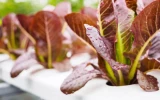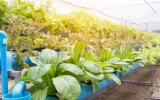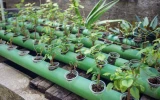The Worst Plants for Aquaponics: Avoid These 7
Aquaponics provides an efficient way of raising fish while planting crops. However, this system offers a limited choice of crops. Only a few types of plants grow well in an aquaponics setup. If you’re starting out on your aquaponics journey and still deciding which plants to grow along with your fish, here are seven of the worst plants that you must avoid planting.
Avoid planting chrysanthemums, mint, blueberries, potatoes, onions, ginger, and peppers in your aquaponics system, as they cannot thrive along with the fish. These plants have certain requirements that will not be suitable for the fish and could potentially kill them.
While these plants certainly have potential in traditional farming setups, they are not suitable choices for aquaponics due to various reasons we’ll find out below.
Summary
- Avoid planting chrysanthemums, mint, blueberries, potatoes, onions, ginger, and pepper in your aquaponics system, as they may hinder your setup's productivity and efficiency.
- While some plants, like lettuce and other green leafy vegetables, thrive best in aquaponics, some plants are pickier and need slightly acidic or basic water to survive.
- If you're a beginner in aquaponics, you should stick with rapid-growing plants that do not require complex setup and grow along with fish species.
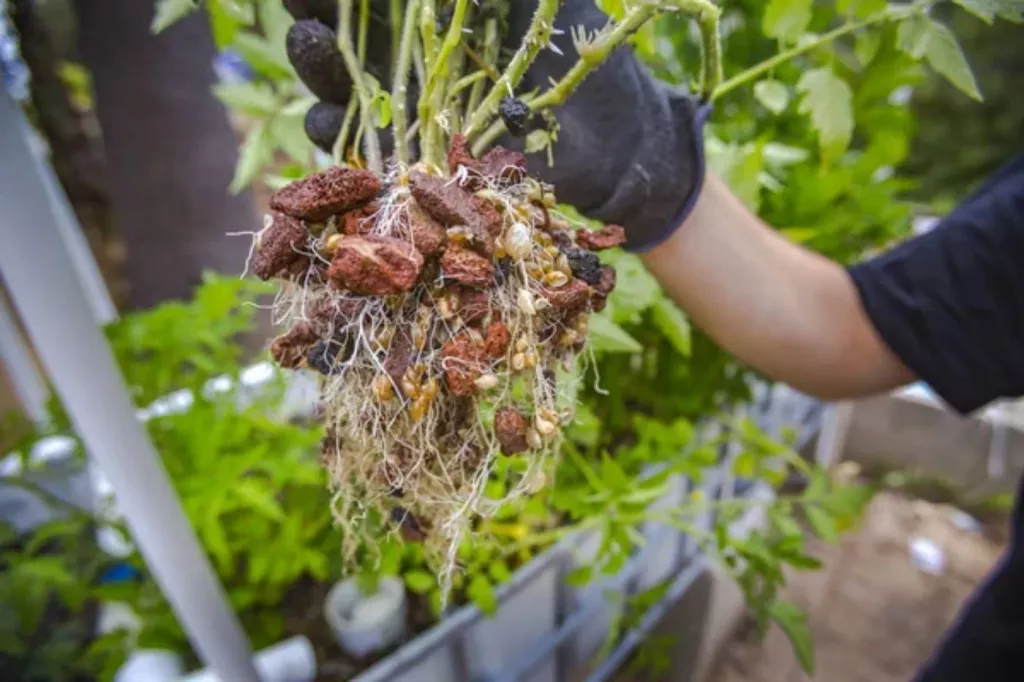
On this page:
Avoid Planting These 7 Crops in Your Aquaponics
Aquaponics is a combination of both aquaculture and hydroponics. In this setup, fish and plants are grown together and must meet each other’s basic needs to grow well.
In aquaponics, plants are provided with nutrient-rich water containing fish waste. They are also provided with artificial light and have a relatively pest-free environment. Simultaneously, they clean and filter the water before recirculating it back to the fish tank.
Because water is recirculated in this system, certain plants that require either acidic or alkaline conditions cannot be planted in this setup as they may have detrimental effects on the fish. Others cannot stand the nitrate concentration in the fish waste.
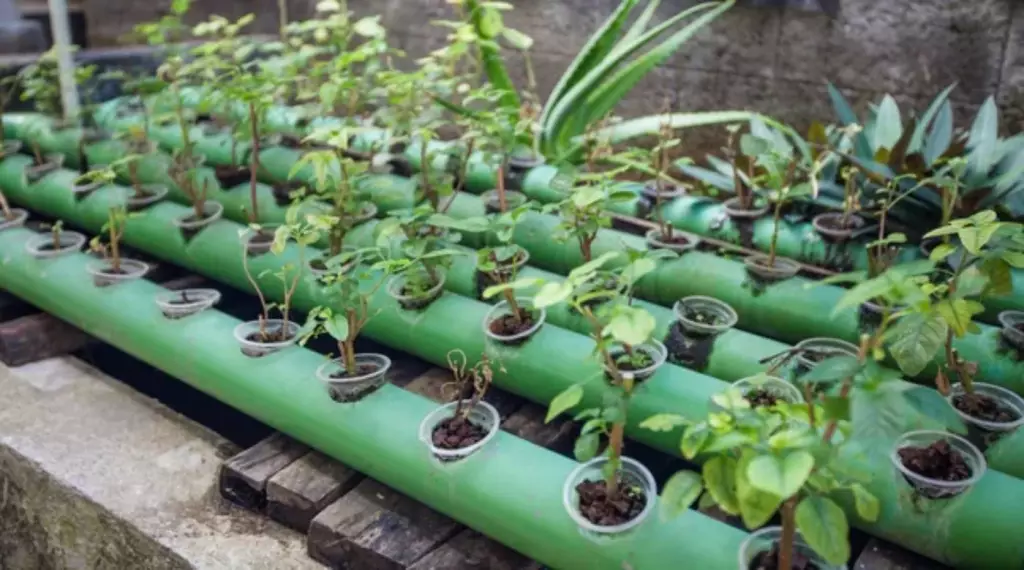
Here is a list of a few plants that you should steer clear of if you have an aquaponics setup:
1. Chrysanthemums like alkaline conditions, which makes them unsuitable for aquaponics
Although chrysanthemums have many benefits to humans in terms of adding color to gardens while repelling insects such as fleas and ants, they are incompatible in most aquaponic systems due to the following reasons:
- They prefer slightly alkaline conditions and thrive best on porous substrates.
- They have a low tolerance for heat and drought.
- Their yield cannot cover the costs of the nutrients and electricity they consume.
- They are high maintenance and require plenty of watering
2. Blueberries prefer low pH levels, which can kill fish in an aquaponics system
Although many growers that use aquaponics systems have tried planting blueberries in the right conditions, they have encountered certain problems that have led them to avoid planting this crop altogether.
Problems encountered with planting blueberries in an aquaponics system include:
- Competitiveness – Blueberries exhibit highly competitive behavior when planted together with other species, aggressively competing for space and nutrients.
- Requires low pH levels – Blueberries require acidic conditions below pH 6 to assimilate nutrients. However, most fish species cannot handle low pH levels. Although you can aim to grow this plant at a neutral pH, it may not be able to yield desirable fruits.
- Susceptible to fungal and viral infections – They have shallow and fine root systems and intertwining shoots. Since they are attractive to many pests, it will be hard to remove these pests with their intertwining shoots. Their shallow roots also do not allow propagation.
3. The mint plant grows rapidly, which can choke your aquaponics system
Mint plants can be grown in an aquaponics setup, but they are not the most suitable option. Although it produces essential oils which can be natural insect repellants, the high-speed growth of this plant can easily deplete the nutrients in your aquaponics system.
Mint grows well in aquaponics because of the high nutrient availability in the water, but this results in towering shoots and an indeterminate spread of their roots. This rapid growth rate of mint plants can choke your system and consume the nutrients that are allotted for other crops.
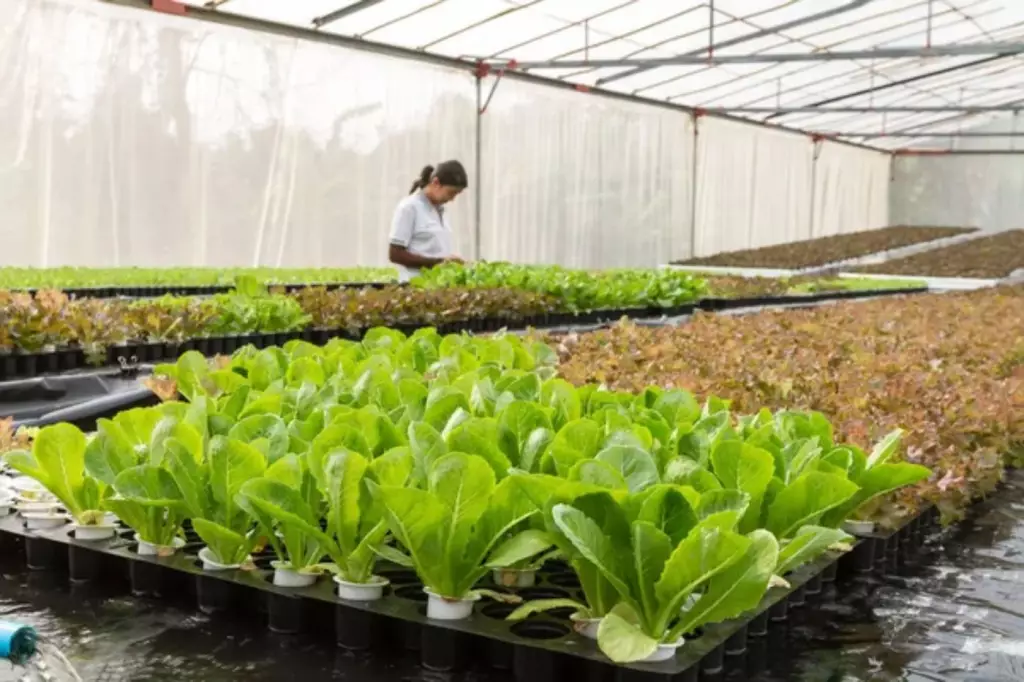
Without proper, regular pruning and harvesting, the overly tall outgrowths of mint plants may possibly attract pests and diseases, which can further disrupt your system and cause issues.
4. Potatoes have specific growing conditions not suitable for aquaponics
While you can grow root crops, such as potatoes, in an aquaponic system, they have very specific requirements that make them difficult to grow in this setup.
-
Potatoes require cool conditions and slightly acidic water ranging from pH 5.5 to 6.5, which can be damaging to the fish and impede the growth of beneficial microbes that upcycle the water nutrients.
-
Planting potatoes in aquaponics requires a deep understanding of the media beds. A specific media bed requirement to stabilize the crown growth and optimize the root growth of your potatoes must contain peat pebbles or hydroton (clay balls).
-
If specific growing conditions for potatoes are not met, it may produce abnormal growth such as long vegetative structures (leaves) and no tubers.
5. Onions are a challenging crop in aquaponics
Onions always make it to the list of the easiest and most profitable garden crops. However, in aquaponics, it has proven to be a challenging task to grow these crops due to the following reasons:
-
They have specific growing conditions such as needing a wicking bed or floating aft system to produce high-quality bulbs; requiring a porous substrate; and maintaining an optimal growing temperature of 54–77˚F (12–25˚C).
-
They are highly sensitive to nitrate concentrations. Any excess nitrates easily affect the color and photosynthetic ability of the leaves, therefore producing low-quality onion bulbs. Other trace elements such as zinc, potassium, and iron must also be monitored closely. Even a slight iron deficiency can cause crops to fail.
-
Onion bulbs cannot be directly examined unless it’s harvest time, which is challenging as you cannot guarantee their rate of growth.
6. Ginger roots cannot be submerged in water, making them unsuitable for aquaponics
The most obvious struggle that makes ginger unsuitable for aquaponics is how it cannot be submerged in water for long. It’s not that they cannot be grown in aquaponics, but they should not be an option for novice growers and should just be left to those with more experience.
Since the goal of ginger planting is to produce high-quality roots, it requires a complex setup where the media bed is not submerged in water and where the design allows drainage after hydrating the growth medium. Soaked ginger roots easily rot, therefore making the whole plant inconsumable.
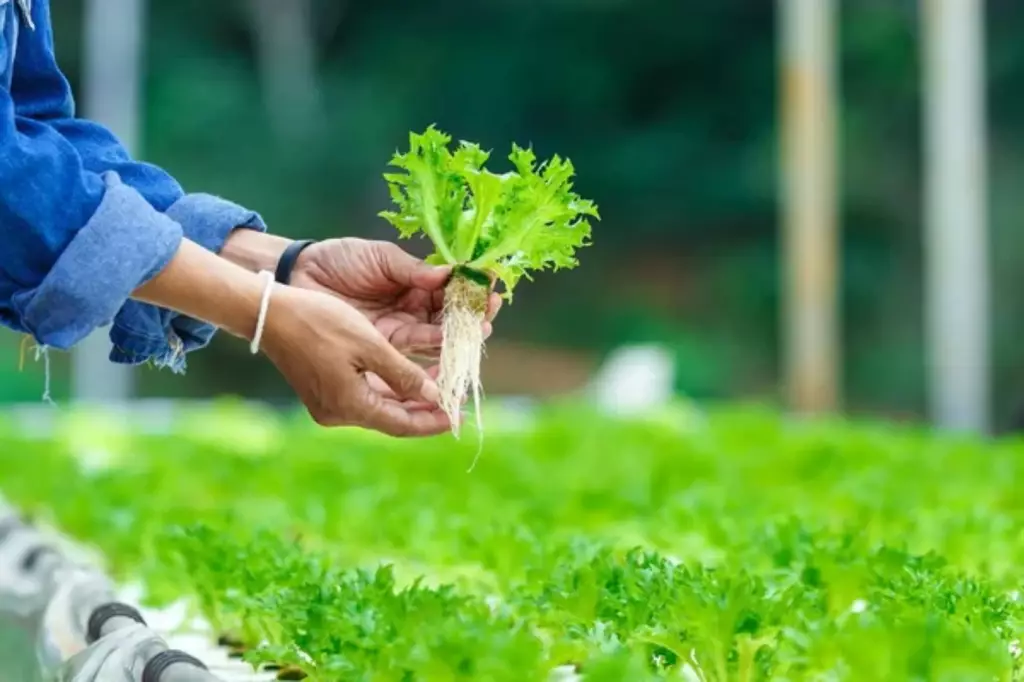
Aside from requiring a complex growing design, ginger takes 10 months before producing a viable rhizome. Their roots had spread to at least 3 feet by this time, and their shoots and leaves may have sprawled over the media bed, causing inconvenience to other crops.
Like onions, they too cannot be examined fully until harvest time, which poses a great challenge in identifying problems relating to their growth.
7. Peppers need consistent warmth and humidity, making them a challenging plant for aquaponics
The following are the reasons why you should avoid planting peppers in your aquaponics system:
- They need consistently warm and humid conditions. In fact, they grow their edible and spicy fruits best in warm temperatures under greenhouse farms.
Their roots need a water temperature of 61–70°F (16–21°C), and their overall humidity requirement is at least 65–60%. Anything higher than the optimal water temperature for capsicum roots can produce deformed fruits.
- It takes 5 months or more before the shoots produce fruits.
- They need a slightly acidic pH between 5.5 and 6.5. At this range, fish cannot survive.
- Peppers need constant checking and monitoring of nitrate levels. They also need to be supplemented with other nutrients, such as phosphorus and potassium.
- They need a separate, sturdy structure to support their growing fruits.
